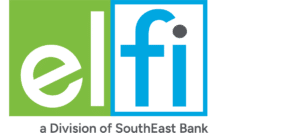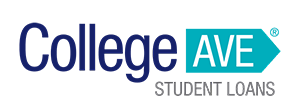For many students, attending college means taking on federal and private student loans to pay for school. But did you know there are options for private student loan repayment?
In this guide, we’ll examine the most common private student loan repayment options and weigh the pros and cons of each option.
An Overview of Private Student Loan Repayment Plans
With any private student loan, interest starts to accrue when the loans disburse to your college or university.
If you choose a plan that doesn’t tackle interest in full while you’re attending school, then any unpaid interest is added to your principal balance and capitalized. This means the interest accrued during school becomes part of your principal balance, and then interest is charged on your total principal (including that interest).
The good news is that if you have multiple student loans, you can choose different repayment options on each loan based on what you can afford, which gives you some flexibility regarding your long-term finances.
Let’s explore the four most common repayment plans for private student loans.
Full Repayment or Immediate Repayment [Principal + Interest]
This repayment plan is as straightforward as it gets. Once your funds are disbursed, you begin making payments with the total principal and interest included.
That means if you have a payment with $200 in principal and $160 in interest, then you pay $360 every month. That’s $4,320 per year, and your average student most likely can’t afford these payments.
However, students with jobs or parents taking out loans on the behalf of their child may be able to pay the full monthly payment – and they will be glad they did.
Pros
- With a full payment, you can minimize the amount of interest you pay over the life of the loan, saving yourself a ton of money in the long run.
Cons
- This can be an unattainable option for many students, especially those taking a full load of classes and working very little.
Interest-Only Repayment
Interest-only repayment plans are exactly as they sound — you’ll pay only the interest accruing while you’re in school, and you’ll defer the principal until after you graduate. In our example, you would be paying $160 per month, or $1,920 per year.
Pros
- Your monthly payments will be much more manageable.
- The principal loan balance will not grow while you finish your education.
Cons
- You won’t be making any progress reducing your principal balance until after you graduate.
Flat Fee, Fixed, or Partial Interest Repayment
This type of arrangement has you pay a flat rate, usually $25 per month. This payment goes toward the interest first, with any remaining interest accruing and capitalizing when the loan enters full repayment.
In our example, you would pay $25 per month or $300 per year, so $135 per month (or $1,620 per year) in interest would be added to the principal balance.
Pros
- The monthly payments are more affordable for many students, and even small payments will make a difference on the total loan cost in the long run.
Cons
- The remaining interest is added to the principal balance and continues to grow.
Full Deferment
If you can’t make payments while you’re in school, don’t worry. Many lenders will give you the option of deferring repayment until after graduation by offering a grace period, which usually lasts six to nine months. By choosing Full Deferment, you opt to pay nothing while you are in school, but your loan balance will continue to grow.
Pros
- Postponing repayment until you’ve graduated and begun working is the most realistic option for most students. This can be especially appealing to people who carry full loads or have extremely challenging coursework and need to focus all energy on school.
Cons
- Your interest continues to pile high on top of the principal, which can seem overwhelming upon graduation. This option can cost thousands of additional dollars in interest over the life of the loan.
The 4 Best Companies for Private Student Loans
Our Top-Rated Picks for 2023 Offer Low Rates and No Fees
Option to skip a payment once a year

In-school deferment available if you return for another degree

Optional $25 payment plan during school to reduce interest after graduation

1% Cash Back Graduation Reward program
Fixed Rate
Variable Rate

Fixed Rate
Variable Rate
Private Student Loan Repayment Options After Graduation
Once you graduate, you have a couple of ways to tackle private student loan repayment. Consider these options:
Graduated Repayment
Some private lenders offer a period of time after your grace period ends to get your bearings. Graduated repayment usually includes a reduced payment for a set period of time (for example, the first year). This is intended to give you time to land the perfect job and get your career rolling before payments ramp up. Your payment would then increase after this initial period of time has passed, until you are making the standard monthly payment on your loan.
Refinancing Student Loans
Once you graduate, you may want to at least explore the savings potential of refinancing your student loans. With a job under your belt and some credit history built up, you might qualify for a lower interest rate. You may also want to release a cosigner from one or more loans.
The good news about refinancing is there are typically no origination or application fees, and it doesn’t cost anything but a small amount of time to consolidate your loans into a more cost-effective package.
What Are the Benefits of Making Payments While in School?
When you compare student loan repayment plans, Full Repayment sounds like the best option (and it is). You don’t accrue interest and your principal doesn’t continue to grow.
Unfortunately, that is not always a feasible solution. Sometimes, circumstances just don’t allow you to work and make full payments on your student loans while attending school. It is preferable to at least make partial payments for two reasons:
Save on Interest
With Partial Repayment or Interest-Only Repayment Plans, you at least pay some of the interest and keep it from being capitalized into your loan. This saves money on interest for the entire life of the loan and can be worth significant money over time.
Build Credit History
While you are making payments, even partial payments, you are establishing and continuing to build your credit. Credit history is extremely important when you graduate. It can affect your ability to buy a car, rent an apartment, or even the type of job you can land.
Why not get started on building that shiny new credit portfolio as early as possible? It will pay big dividends in the future.
How Selecting a Shorter Loan Term Could Save You Money
With private student loan repayment, you will often get lower interest rates when you select a shorter term for your loan. Lenders loan money to earn interest, but they also want their money and earnings back sooner rather than later. To encourage this, the lowest rates are reserved for the shortest-term loans.
Lenders live by the Time Value of Money (TVM) principle, meaning money in hand has more value than money paid in the future due to its earning potential.
This works in your favor if you can swing the payments. If you opt for a five-year loan term, your payment will be higher, but you will pay less interest over the life of your loan. The cost savings can be in the thousands, depending on how much you owe. You’re happy, the lender is happy — it’s a win-win for everyone.
Comparing Private Lenders
When you are shopping around for private student loans, most lenders are upfront about their repayment plans. They have clear policies regarding the types of repayment programs they offer and how you can apply for them.
If you are pursuing additional funding for your education, or are graduating soon and want to explore refinancing, consider our rate comparison tool.
You can use this tool to compare interest rates, terms, and special offers from multiple top-level private student loan companies. Just complete the quick and easy form, and within minutes you will have several pre-qualified offers from highly reputable lenders in the private student loan sector.
















